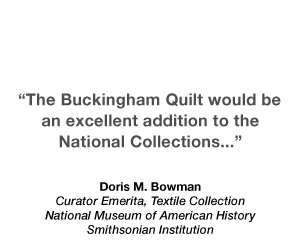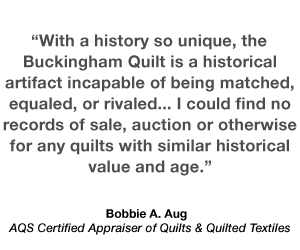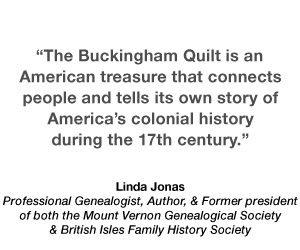The Yale-Buckingham Quilt is a remarkable piece of early American history preserved and quietly passed down through nine generations. Images and history of this Historic Artifact have never been public until now.
This handmade quilt, stitched by Hester Hosmer Buckingham (1641-1702), is about 350 years old. It was part of her trousseau when she married the Rev. Thomas Buckingham (1646-1709) in 1666. She carded, spun and colored the thread and wove the cloth which forms the lining. The top is of Damask Cloth which, at the time, was very expensive and considered a great luxury to have. Thomas Buckingham was one of the seven men who founded the Collegiate School of Connecticut at Saybrook in 1701, which later was named Yale College (now Yale University in New Haven, CT).
Rev. Thomas Buckingham and Hester Hosmer Buckingham are the 8th G Grandparents of the current owner of this beautiful colonial textile.
Quilting in the 1600s
Although quilting was common in Europe during the colonial times, quilting as we know it was quite uncommon in America. Many European women may have learned the art of applique, and even brought their quilted materials with them to America. But America was different. There was a shortage of fabric in America. During the 1600's, the Navigational Acts restricted the growing of cotton or production of wool. Fabric had to be imported, and as a result, was very expensive. Only wealthy women could afford to quilt. Much of the quilting was whole-cloth quilting— quilting elaborate and beautiful patterns on single pieces of cloth.*
Prior to The Yale-Buckingham Quilt being unveiled to the public:
The previous oldest surviving early American quilt was the Eve van Cortlandt Quilt, circa 1760, currently stored at the Smithsonian Institute.
The oldest dated quilt in North America was in the McCord Museum in Montreal, Canada, circa 1726. It is believed it was made in England in the 18th century and brought to Canada in the early 19th century.
*Source: Mill House Quilts






